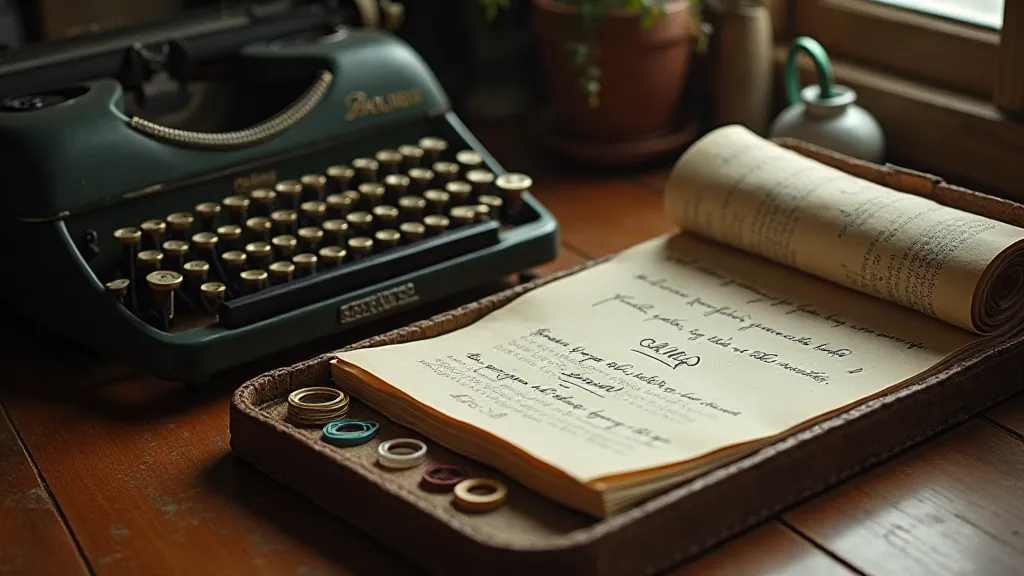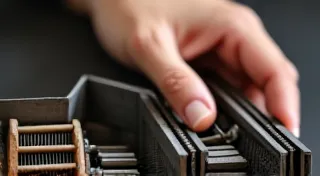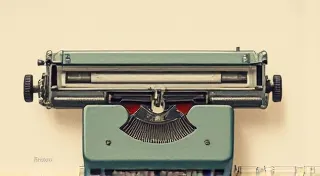The Cartographer’s Hand: Tracing the Evolution of Ribbons and the Tacit Poetry of Hermes Typewriters
There's a quiet dignity to a Hermes typewriter. It's not the flamboyant grandeur of an Underwood, nor the bustling efficiency of a Royal. It’s something more… subtle. It’s the voice of an artisan, a whispered narrative carried on the faintest impression of ink. And that voice, that soul, is inextricably linked to the ribbon – a seemingly insignificant element that, in the hands of Hermes’ engineers, became a crucial instrument in creating a profoundly individual writing experience.
My own journey with Hermes typewriters began, predictably, with a search for a machine that felt… right. I'd tinkered with other vintage brands – Underwoods, Royals, even a curious Smith Corona – but nothing resonated. Then, I found a Hermes 3000, its olive green paint chipped, its escapement sluggish. It wasn't beautiful, not initially. But the moment I inked it up, the world shifted. The typing wasn’t just printing characters; it was composing a feeling.
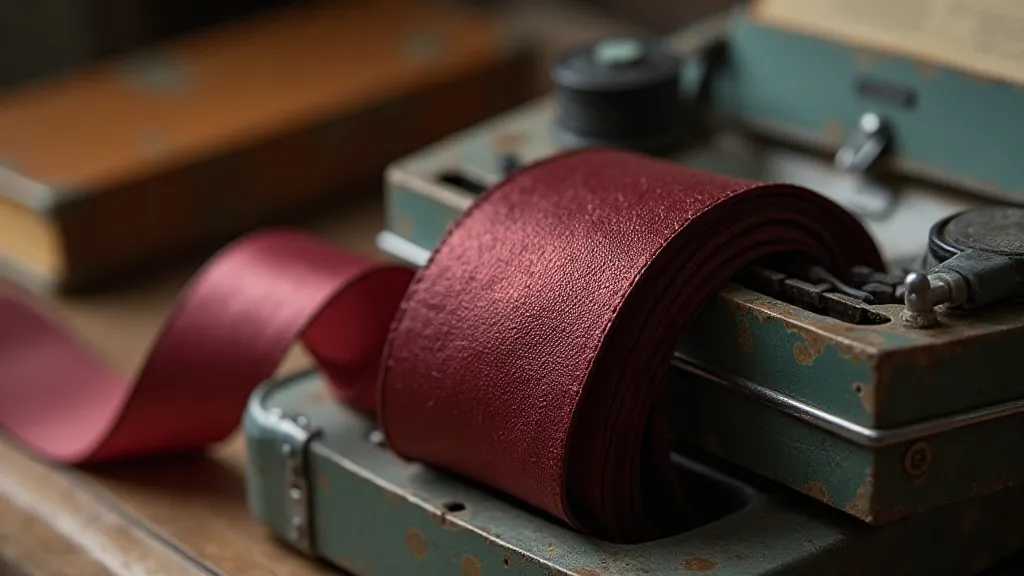
The Genesis of the Ribbon: From Fabric to Compound
The evolution of the typewriter ribbon is a story mirroring technological advancement itself. Early typewriters utilized inked calico ribbons, stretched taut across the platen mechanism. These were messy, unreliable, and prone to smudging. Imagine the frustration! The quality of the print depended heavily on the ribbon's condition and the meticulous care of the user. It was a labour of love, and a frequent source of exasperation. Achieving consistent results was challenging, a far cry from the ease of modern printing – and a subject that many vintage typewriter enthusiasts, like myself, find endlessly fascinating to investigate.
The shift to silk ribbons marked a significant improvement. Silk offered greater durability and a more consistent ink transfer. But the true revolution arrived with the introduction of chemically treated ribbons – ribbons coated with a compound that adhered to the silk and provided a cleaner, darker impression. Hermes, renowned for their meticulous engineering, embraced these new technologies early on, constantly refining their ribbon formulations to complement their meticulously designed typefaces.
Hermes & Ink: A Partnership of Precision
What set Hermes apart wasn't merely *using* advanced ribbon technology; it was the way they integrated it with their machine’s design. The tight spring tension of the platen, the carefully calibrated typeface pressure – everything worked in concert with the ribbon to create a distinct writing experience. Hermes’ typefaces, known for their elegance and clarity, weren’t simply beautiful letterforms; they were specifically designed to work in harmony with the ribbon's ink transfer properties. Maintaining that harmony, ensuring proper alignment and function, is a delicate process, and understanding the subtle nuances of vintage typewriter mechanics can be a rewarding challenge – a journey that occasionally requires a close examination of techniques like demystifying typewriter alignment.
Early Hermes machines, particularly the models from the 1930s and 40s (like the Hermes Tangent and the Hermes Deluxe), often used ribbons with a characteristic "warmth" – a subtle reddish hue that lends a certain romanticism to the text. This wasn't a deliberate "color" in the modern sense, but rather a consequence of the pigments used in the ribbon compound and the specific light refraction through the platen. Later models began to incorporate more standardized black ribbons, mirroring the move towards mass production and a more consistent output.
Restoring a Hermes typewriter, then, isn't just about cleaning and lubricating the mechanics. It’s about understanding the subtle interplay between these various elements. A new, generic black ribbon can strip away the very essence of the machine, rendering it a mere impersonation of its former self. The entire process requires a certain finesse, a gentle touch honed through experience - sometimes even necessitating a complex restoration project similar to restoring a Royal Quiet De Luxe.
A Palette of the Past: Identifying Rare Ribbon Colors
The rarity of certain ribbon colors adds another layer of intrigue to the world of Hermes typewriters. While black and dark brown were commonplace, other shades offer glimpses into the company’s experimental past and the nuances of ribbon manufacturing practices. Identifying these colors can be surprisingly challenging, requiring careful examination under the right lighting and a healthy dose of historical context.
- Burgundy/Mahogany: Common in Hermes 3000s and earlier models (1950s-1960s). Often displays a slightly faded appearance with age.
- Deep Violet: Rare, found primarily on Hermes Majestic and Hermes Speedy models. Highly sought after by collectors.
- Forest Green: An extremely rare color, believed to have been used for a limited production run in the late 1940s.
- Pale Pink: Appears to have been an experimental color, seen on a few Hermes 220s and 3000s.
The significance of these colors extends beyond mere aesthetics. They offer clues about the date of manufacture, the intended market, and the internal workings of Hermes' ribbon production processes. A faded burgundy ribbon on a Hermes 3000, for instance, might suggest a machine that has seen years of faithful service, its ink-stained history etched into every keystroke.
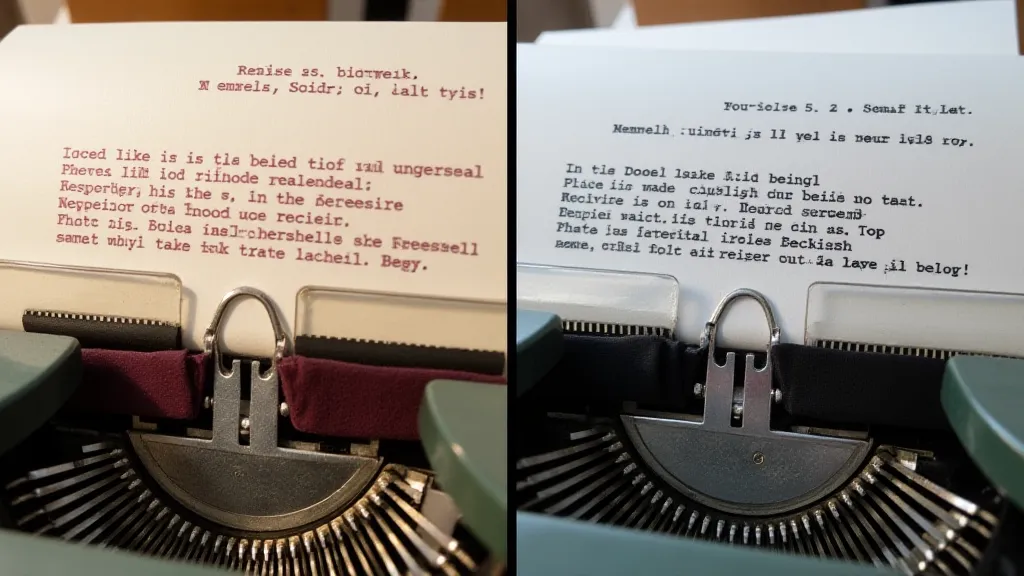
The Tacit Poetry of the Impression
The beauty of a Hermes typewriter isn't found in its flash or fanfare, but in the quiet dignity of its work. It's in the slightly uneven impression, the subtle variations in ink density, the faint trace of the ribbon's texture left on the page. These aren’t imperfections; they’re hallmarks of a hand-crafted machine, a testament to the artistry of its design. They represent a tangible link to a time when craftsmanship and quality were paramount.
The act of typing on a Hermes is a tactile experience, a connection to the past. It's a reminder that writing isn’t simply about transferring words from the mind to the page; it's about creating something tangible, something with a history, a soul. It's a slow and deliberate process, far removed from the instant gratification of digital composition.
My Hermes 3000, initially a neglected and chipped relic, now sits proudly on my desk. It's more than just a typewriter; it's a portal to another era, a conduit to a slower, more deliberate way of writing. And it all began with a ribbon – a seemingly minor component that holds the key to unlocking the tacit poetry of a truly remarkable machine. The journey of restoring such a machine can be fraught with challenges, echoing the complexities of other vintage typewriter restorations, such as restoring the Escort typewriter.
The wear and tear on a vintage typewriter, the subtle discoloration of the ribbon, even the faint aroma of aging ink – these are all part of its story, a testament to the countless words it has recorded. They’re like layers of a palimpsest, each telling a silent tale of the past, contributing to the unique character and charm that makes these machines so captivating – a concept beautifully explored in studies of chromatic decay on Royal Standard machines.
